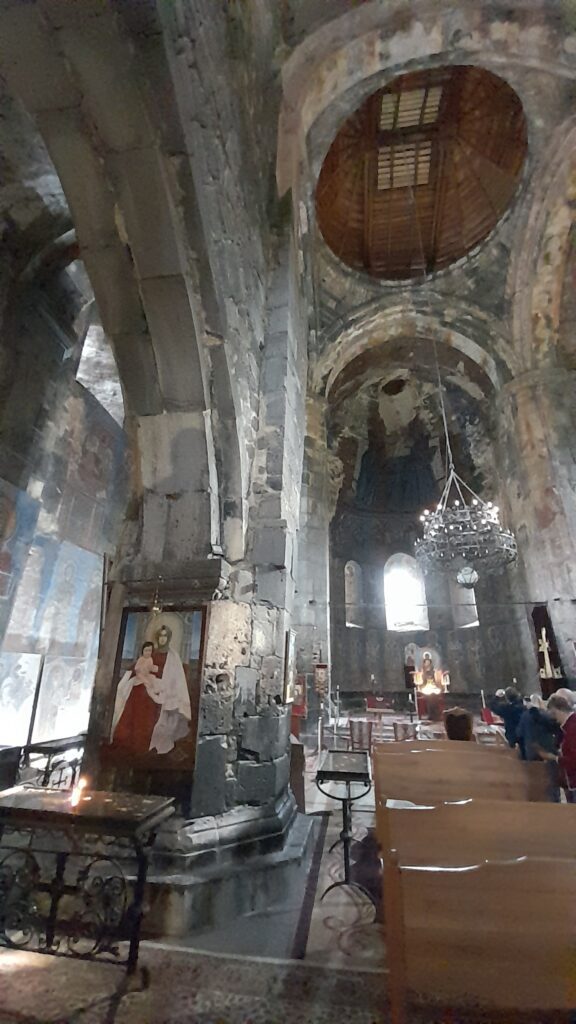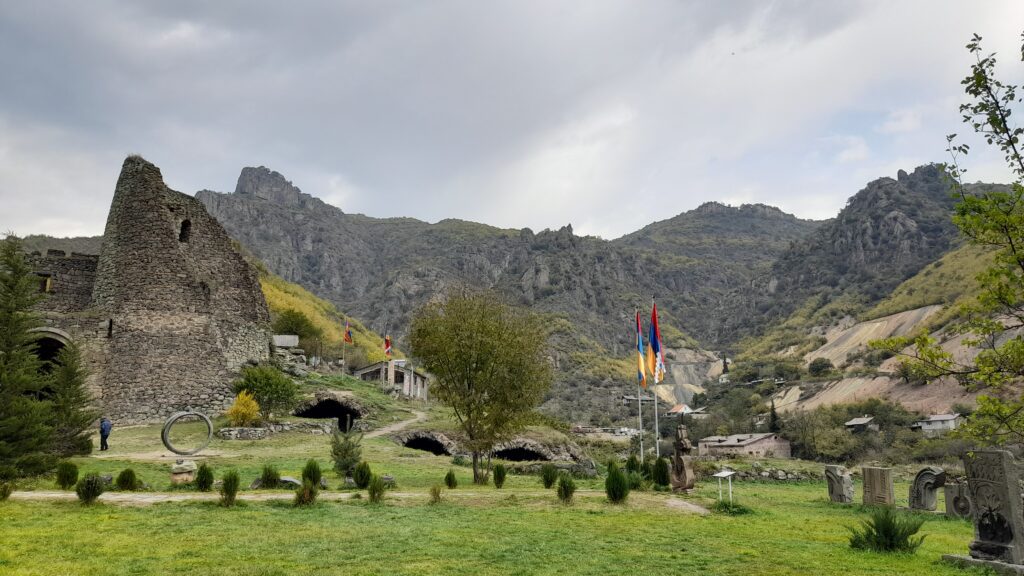Book now
Akhtala Monastery Complex in Armenia
Unveiling a 10th-Century Marvel
Welcome to Akhtala, a small town in the Lori region of Armenia, home to the enchanting Akhtala Monastery, also known as Pghindzavank. Let’s embark on a journey to explore the rich history, architectural marvels, and cultural significance of this hidden gem.
A Fortress Through Time
Akhtala Monastery stands as a testament to the resilience of the Armenian people, with its roots tracing back to the 10th century. The fortress, an integral part of the complex, played a crucial role in safeguarding the northwestern regions of Armenia. Even today, its well-preserved walls whisper tales of historical shifts under various rulers, from Mongols to Turks.





Location: Akhtala, Armenia
The Artistic Haven: Surp Astvatsatsin Church
At the heart of the monastery lies the Surp Astvatsatsin Church, dedicated to the Holy Mother of God. Step inside, and you’ll be captivated by the highly artistic frescoes adorning the walls and partitions. Dating back to the 11th-13th century, these masterpieces depict biblical scenes and saints, showcasing the beauty of Byzantine art outside its borders.






Copper Mines and Kyurikids
Originally named Pghindzahank, meaning copper mine, Akhtala was transformed into a monastery in the 12th century by Princess Miriam of the Kyurikyan clan. The complex includes chapels, dwellings, tunnels, and crypts, offering a glimpse into medieval Armenian monastery life.
Throughout its history, Akhtala Monastery has served different communities. In the 18th century, it became a haven for ethnic Greeks. Today, Armenians, Greeks, and Georgians gather on pilgrimage days, creating a unique cultural tapestry within its walls.






Geography and Architecture
Nestled in northern Armenia near the Georgia border, Akhtala Monastery stands proudly on a small plateau above the Shamlukh River. The central building, the Church of the Most Holy Mother of God, exhibits a blend of Armenian and Georgian architectural styles, a testament to the monastery’s historical journey






From Destruction to Restoration
Despite facing invasions and destruction over the centuries, including attacks by Tamerlane and the Avar invasion, the monastery was restored in the 19th century. It later became a focal point for the Greek Orthodox Church in the Caucasus, adding another layer to its diverse history
The Charm of Akhtala
While not frequently visited by tourists due to its distance from Yerevan, Akhtala Monastery offers a unique experience for those who seek historical richness, fortress structures, and the breathtaking beauty of its frescoes.






People also read:
- 45 Things to See and Do in Armenia
- Unveiling the Mysteries of Garni Temple in Armenia
- 25 Things to See and Do in Yerevan
- Exploring the Beauty of Geghard Monastery in Armenia
- Khor Virap Monastery: Unveiling Armenia’s Historical Gem
- Areni Cave: Unearthing Millennia of History and Discoveries
- Yerevan in 25 Photos
- Saghmosavank Monastery: A Timeless Marvel in Armenian History
- Noravank Monastery: A Journey Through Time
- Amberd Fortress: A Citadel in the Clouds
- Etchmiadzin Cathedral: A Beacon of Armenian Christianity
- Haghartsin Monastery: A Time-Tested Beauty in Armenia
- Zvartnots Cathedral
- Exploring Odzun Church: A Hidden Gem in Armenia
- Haghpat Monastery: A Timeless Beauty in Armenia
- Armenia in 50 Photos
- Sevanavank: A Pearl on Lake Sevan’s Shoreline
Spend the night in Armenia
Book a tour
FAQs
Read more articles on my Armenia page
This article may contain affiliate links. This means that we receive a small commission when you book something via these links. Of course, this does not cost you anything extra. Did our tips help you? We would love it if you book your trip via the links in the article above. Thank you so much.